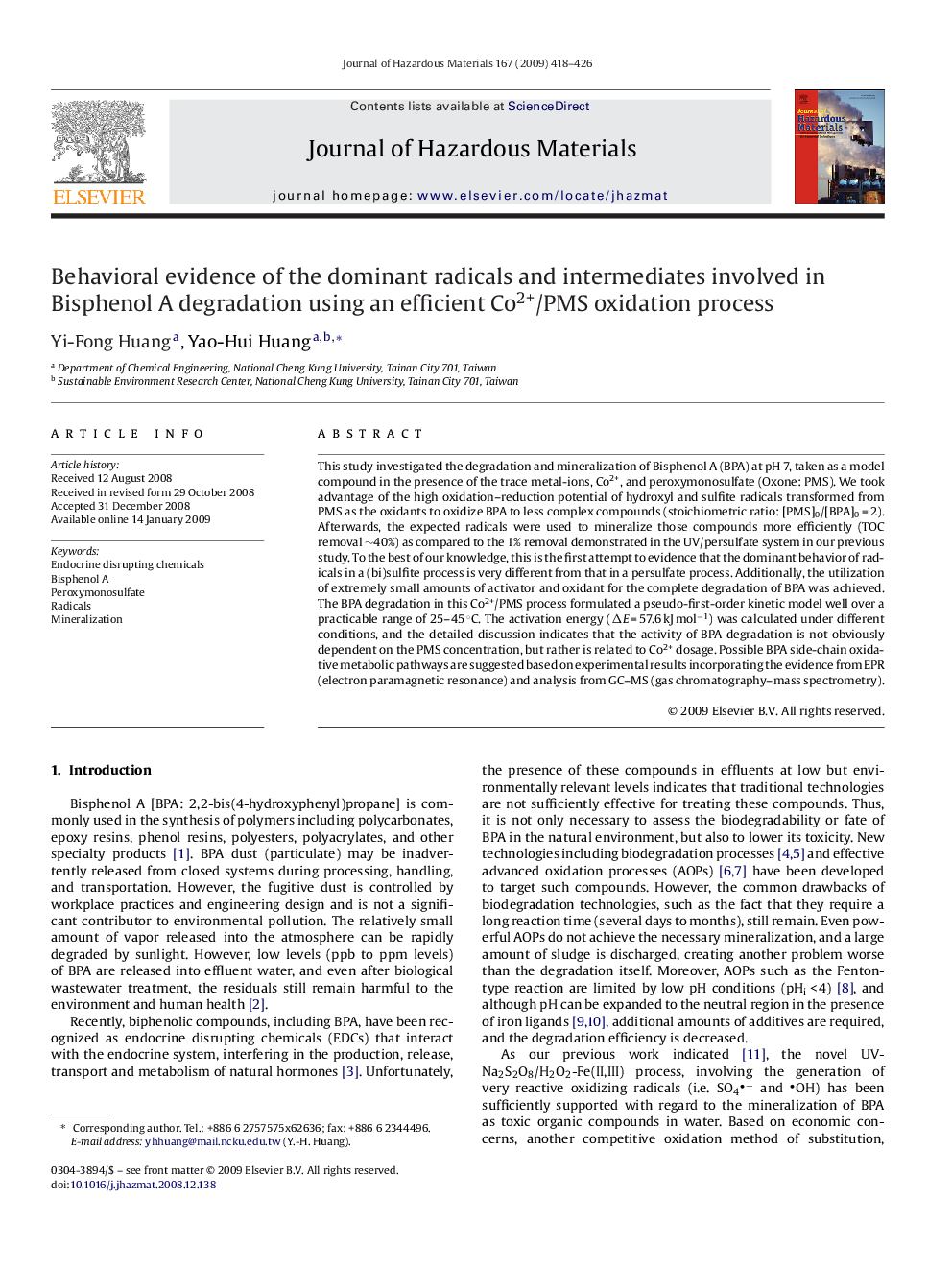| Article ID | Journal | Published Year | Pages | File Type |
|---|---|---|---|---|
| 581798 | Journal of Hazardous Materials | 2009 | 9 Pages |
Abstract
This study investigated the degradation and mineralization of Bisphenol A (BPA) at pH 7, taken as a model compound in the presence of the trace metal-ions, Co2+, and peroxymonosulfate (Oxone: PMS). We took advantage of the high oxidation-reduction potential of hydroxyl and sulfite radicals transformed from PMS as the oxidants to oxidize BPA to less complex compounds (stoichiometric ratio: [PMS]0/[BPA]0 = 2). Afterwards, the expected radicals were used to mineralize those compounds more efficiently (TOC removal â¼40%) as compared to the 1% removal demonstrated in the UV/persulfate system in our previous study. To the best of our knowledge, this is the first attempt to evidence that the dominant behavior of radicals in a (bi)sulfite process is very different from that in a persulfate process. Additionally, the utilization of extremely small amounts of activator and oxidant for the complete degradation of BPA was achieved. The BPA degradation in this Co2+/PMS process formulated a pseudo-first-order kinetic model well over a practicable range of 25-45 °C. The activation energy (ÎE = 57.6 kJ molâ1) was calculated under different conditions, and the detailed discussion indicates that the activity of BPA degradation is not obviously dependent on the PMS concentration, but rather is related to Co2+ dosage. Possible BPA side-chain oxidative metabolic pathways are suggested based on experimental results incorporating the evidence from EPR (electron paramagnetic resonance) and analysis from GC-MS (gas chromatography-mass spectrometry).
Related Topics
Physical Sciences and Engineering
Chemical Engineering
Chemical Health and Safety
Authors
Yi-Fong Huang, Yao-Hui Huang,
